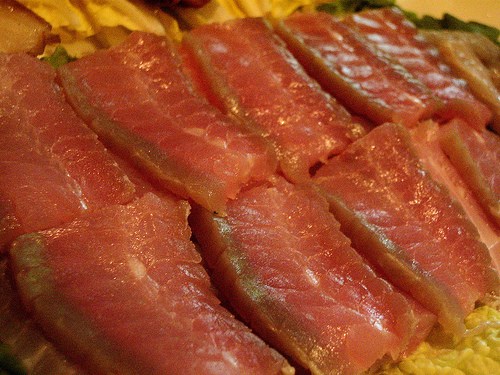While some of the country’s dishes are downright scary (both in appearance and taste), others are just unfamiliar concepts to the Western palate that work surprisingly well. Nevertheless, they are all components of Korea’s rich cultural and gastronomic heritage that should not simply be brushed off.
Below are eight of them. But I must warn you, reader: these dishes aren’t for the faint of stomach.
Beondegi (번데기)
If the thought of roasted silkworm larvae doesn’t turn you off, then the distinctive smell will.
 |
| Image |
And to make matters worse, beondegi boast a rather memorable flavor combination—a roasty, chewy, insecty fusion that leaves one hell of an aftertaste. These little guys are also sold canned, stewed in a buggy broth. On the upside, insects like beondegi, are a high-quality, low-fat protein that can boost your energy. So much so that scientists say they could potentially be the next big superfood.
Which I suppose is why Korean parents often give them to their kids as snacks—without telling them that they’re eating bugs, of course.
Seonji Haejangguk (선지해장국)
Coagulated ox blood hangover soup. I know your mouth is watering already.
After a night of too much drinking, Koreans often cure their hangovers by slurping up spicy, hot soup. (Which, I can personally say is quite effective.) But this particular variety, which features a moldy, gray, sponge-like chunk of coagulated blood, isn’t my cup of tea (or bowl of soup).
Dalkddongjib (닭똥집)
This little treat translates literally to “Chicken’s House of Poo” which, in essence, is chicken anus, a popular drinking food among Korean “salarymen.”
 |
| Image |
Dalkddongjib is usually steamed or stir-fried and is made with a seemingly harmless mix of oil, chili peppers and sesame seeds. The dish is a bit on the chewy side, but the flavor, I have to admit, isn’t all that bad. Then again, I guess anything is good when served with soju.
Gejang (게장)
Instead of being cooked, these little crabs are seasoned in various sauces, such as soy- or chili pepper-based sauce, fermented a bit and eaten raw. The entire creature is meant to be eaten, but the shells are still quite hard.
This dish is especially popular in South Korea, and even has an entire alley dedicated to restaurants that serve up the specialty.
Hongeo (홍어)
Speaking of fermented seafood, hongeo, or fermented skate, is another one of the more bizarre—and one of the strongest smelling you will find in the entire world.
 |
| Image: Zen Kimchi |
Skates, which look similar to rays, don’t urinate like other fish. Instead, they pass uric acid through their skin. When it is fermented, the uric acid breaks down into a compound which smells exactly like ammonia. The smell of this fish is so strong that some suggest inhaling through your mouth and breathing out through your nose to reduce exposure to the odor.
But, like chicken feet, they provide plenty of collagen, which might just be one of the reasons Koreans have such amazing skin.
Sannakji (산낙지)
Live octopus is perhaps one of the most famous on this list, thanks to its appearance in multiple travel shows, as well as Korea’s most famous movie, Oldboy. (Watch below for the full effect.)
When ordered, the chef will chop up the tentacles which will continue to squirm around when served. Diners then attempt to pry the bits of moving, sucking tentacle from their plates, dip them in a variety of sauces and finally revel in the strange taste sensation. Surprisingly, however, there’s not much flavor… but it sure is fresh.
Chewing is the most important part of dining on live octopus, as there have been cases (approximately six a year, in fact) in which the octopus has used its suction cups to grab onto the eater’s esophagus, thus choking them to death. Who would have thought that octopi could make their way to the top of the food chain?
Boshintang (보신탕)
To set the record straight, yes, dog is still eaten in Korea, despite what the government or media says. That being said, it is not a dish that is commonly eaten, and when it is, it’s usually by old men. For “stamina.”
In fact, most young Koreans are appalled at the fact that eating dog is still legal, especially considering the incredibly sad and abusive practices that are carried out in dog farming. It’s quite common to see animal rights organizations out and about, protesting dog farming, and if my guess is correct, the whole practice of eating dog will be outlawed within the next decade or so.
Gaebul (개불)
Take a look at this delicacy in action. Would it surprise you that this little creature is eaten as an aphrodisiac… for men?
Gaebul is a species of sea worm whose phallic appearance has earned it its nickname of “penis fish.” If that weren’t enough, chewing on gaebul results in an explosive spray of…salt water. This is also what it tastes like. Enough said.
Is your appetite adventurous enough to stomach these daring dishes? Which would you try? Leave them in the comments below.
Words by Mimsie Ladner of Seoul Searching. Content may not be reproduced unless authorized.


